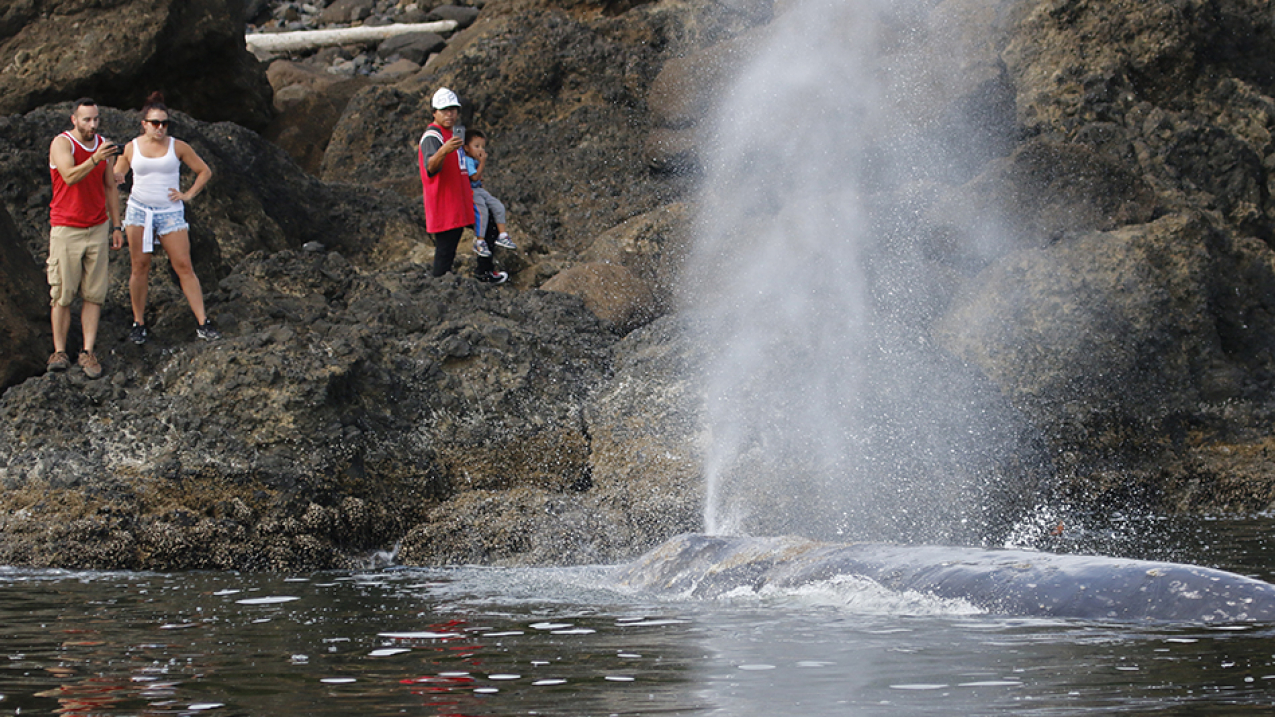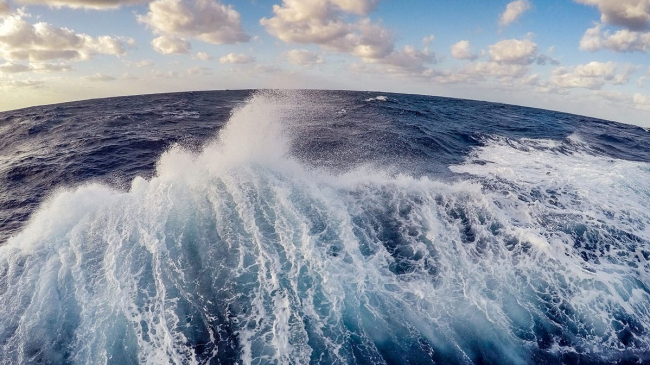
A gray whale blows adjacent to a shallow, coastal rock and boulder area known for high acoustical activity (snapping and clacking sounds) from 'snapping shrimp.' This photo was taken under NOAA/NMFS permit #16111. (Image credit: Courtesy of OSU/GEMM Lab)
Scientists think that the crackling sounds of snapping shrimp offsite link off the Oregon coast act as a dinner bell for eastern Pacific gray whales, according to new research by NOAA and Oregon State University (OSU) presented at the 2018 Ocean Sciences Meeting offsite link.
In 2016, ocean researchers deployed a drifting hydrophone – a microphone that records sound underwater – in the shallow waters off the Oregon coast. What they heard was loud popping and clacking sounds characteristic of the large claws of snapping shrimp.
Though the shrimp are typically found in warm, shallow subtropical water, this was the first time they were detected in the colder waters off the coast of the Pacific Northwest. Researchers observed that while eastern Pacific gray whales often forage near the rocky reefs the shrimp inhabit, they don’t eat the snapping shrimp, but rather the small crabs and other crustaceans usually found near the rocky reefs.
Joe Haxel, a marine acoustics researcher with OSU offsite link and NOAA's Pacific Marine Environmental Laboratory, suspects the loud snaps might be an acoustic cue to direct whales to areas of the ocean where their typical prey is plentiful.
For more, see this snapping shrimp news story from the American Geophysical Union. offsite link
Media contact
Monica Allen, 202-379-6693



